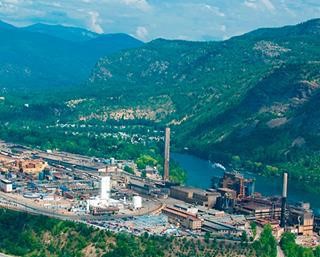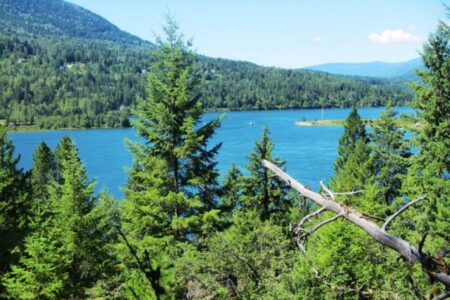Editorial Musings: Some good news from Teck. And other things to consider.
It’s wonderful to be able to pass on some good news, especially about such a vital part of our region. Teck Trail Operations is full of good people and it does an amazing amount of social and economic good in all our local communities.
Teck Trail Operations has issued a press release assuring us that their operations will continue to meet the most stringent standards for capture rate of sulphur and particulate matter emissions nation-wide for base metal smelters.
The Performance Agreement Concerning Air Pollutants From Base Metals Facilities commits Teck Trail Operations to capturing a minimum of 95% sulphur from our feeds, and an annual total particulate matter intensity rate of less than 2 kg per tonne of metal produced. Trail Operations currently already exceeds the 95% sulphur capture target and has been doing so for Particulate Matter target of less than 2 kg per tonne of metal produced.
“This agreement highlights Teck’s commitment to continuing to meet the highest standards of environmental performance in the base metal smelting sector,” said Thompson Hickey, General Manager, Trail Operations. “This agreement confirms Trail Operations as a national leader in smelter emissions control in Canada, and confirms our commitment to continuing to reduce our emissions of sulphur and particulates even further.”
This is good news for everyone living in the local airshed, and we congratulate Teck’s Trail Operations for their diligence and success in managing sulphur and particulate pollution. All of us who breathe are grateful for that, and for the many other local benefits from the Trail Operations.
Let’s also consider Teck’s efforts to reduce pollution in another location.
In the Elk Valley, Teck has a different problem which, despite efforts Teck has made, is much harder to address: selenium pollution from coal mining operations harming fish populations in the Elk River. For a more detailed discussion, check this article by Lars Sander-Green from November 20, 2017.
Selenium is one of those elements that is necessary for animal life, but only in trace amounts; at higher levels, it is toxic or even fatal. (As more of us are beginning to realize, carbon dioxide is like that too: at a very low percentage of our atmosphere, it keeps our planet warm enough to favour our kind of life and is necessary for plants; at slightly higher concentrations, it destabilizes the climate and causes weather havoc, extinction of species and feedback loops that increase warming further and faster and if left unchecked could end global civilization, including our economic constructs.)
But back to considering industrial pollution locally rather than globally:
Where does the government stand on selenium pollution of fish-bearing waters? For a discussion of how it happens and why it’s difficult to control in coal-mining operations, how federal and provincial regulations have done so far, and may or may not do in the future, those interested can read another article at this link by Lars Sander-Green, posted in the Elk Valley Coal News on January 14, and on the Wildsight website the day before that.
The bottom line is that we all benefit in many ways from Teck’s operations, not only in Trail but elsewhere as well. And we all pay, in various ways, for the environmental degradation that goes along with all the resource-extraction industries our economy relies upon – mining, logging, some types of fishing, fin-fish aquaculture, and even hydro-power generation.
The question is, when is the current and future environmental cost of any given industry or resource extraction operation too high, and who decides that, and on what criteria? All of us who live and breathe have a direct interest in the answers. Some of us are eagerly awaiting the promised government decision-making based on scientific evidence, because it hasn’t happened yet.
























